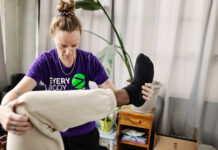We’ve all been down this road. Your nagging shoulder pain turns into a full-blown injury. Your knee hasn’t felt quite right since the last round of squats and it’s taking a toll. You’re frustrated – you don’t want to give up your gym workout and all of its benefits to you.
We hear these complaints frequently in our physiotherapy clinic. Knowledge of your anatomy and potential body parts at risk can be key to preventing these infuriating injuries. Here’s what you need to know about five of the most common gym injuries.
1. Wrist Sprain
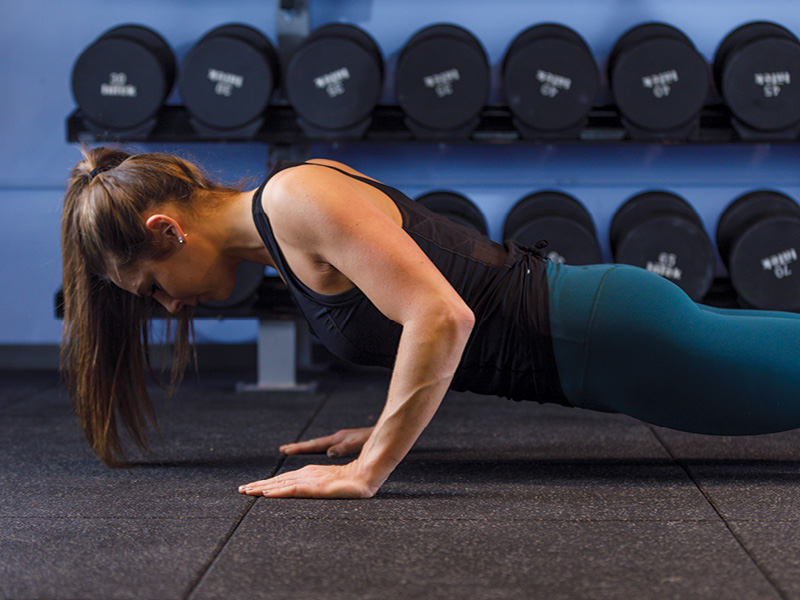
Unlike other joints that are inherently stable from their bony structures, wrist stability depends entirely on ligaments. This makes the wrist more vulnerable to injury when extended back during movements like burpees or push-ups. Repetitive motions and abrupt force to the wrist can easily displace any one of the eight small bones that make up this joint.
Tip: Use a gym glove with built-in wrist support to help protect weak wrists, or when doing push-ups, hold onto dumbbells placed on the ground.
2. Pulled Calf Muscle
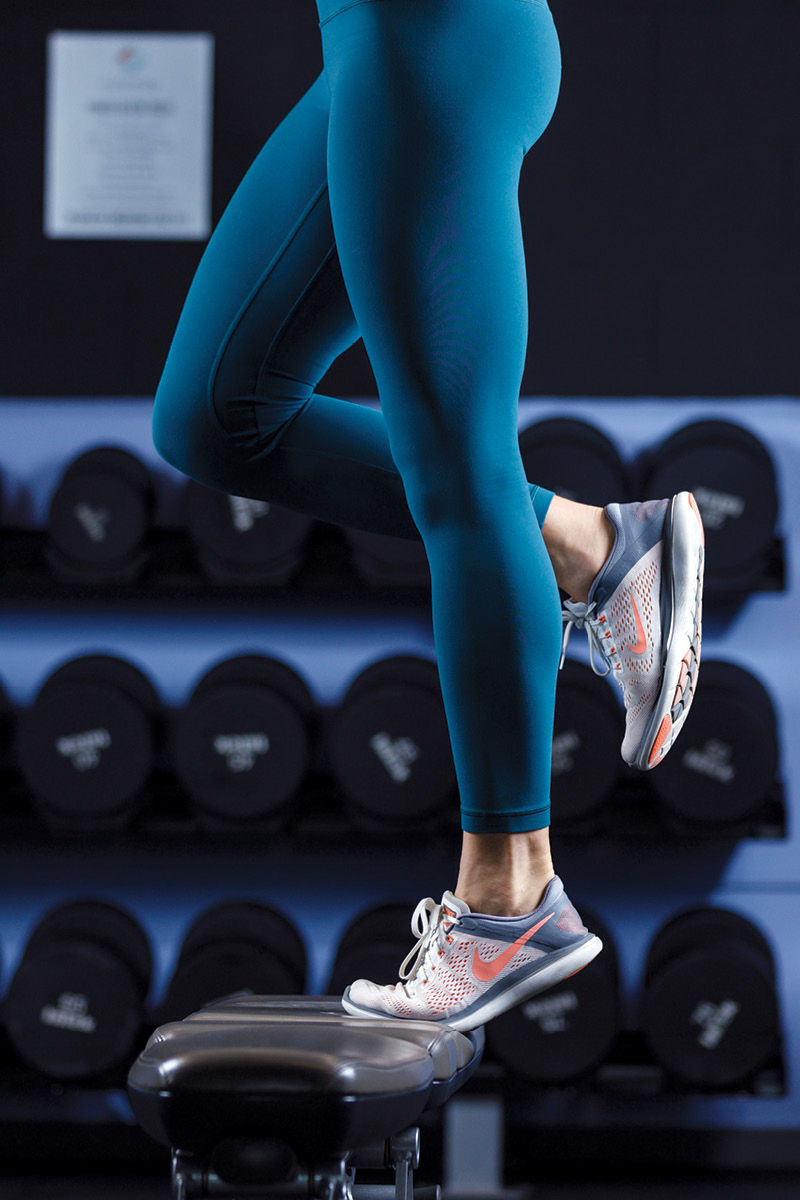
In the middle of your calf is where the muscle and Achilles tendon meet. This is the weakest part of the calf and most likely area to strain during movements such as mountain climbers or jump squats. Research has shown stretching to be ineffective in preventing this injury, whereas strengthening the calf muscle is the key to its prevention.
Tip: Incorporate calf raises regularly into your routine, progressing by leaning more forward, and/or quickly dropping your heel.
3. Low-back Strain
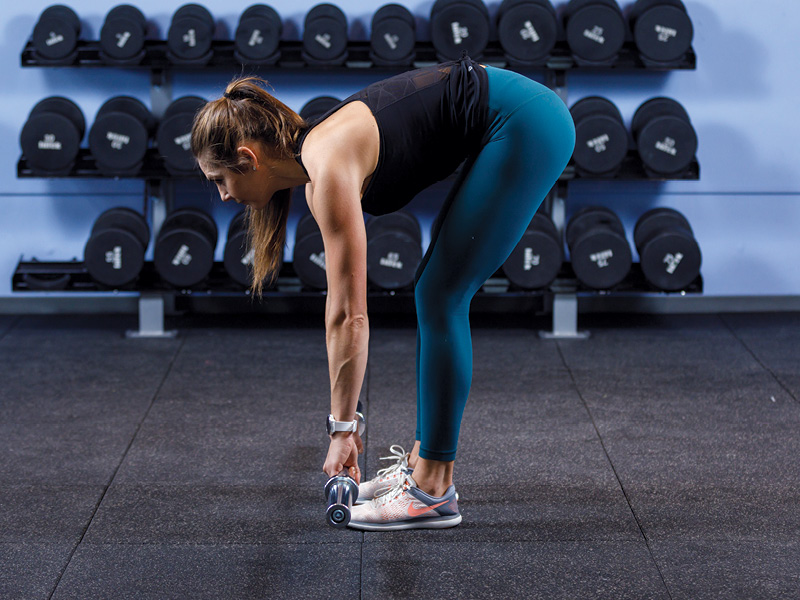
Your spine position plays a vital role in safe exercise. Your low back is built to withstand large loads only when positioned with a small natural curve, referred to as lordosis. Studies have shown that if you lift or squat while bent too far forward (without a lordosis), there is exponential stress on the discs, ligaments and joints in your low back. This can result in severe low back pain or sciatica, and quickly put you out of action.
Tip: Find your optimal lordosis by lowering to your hands and knees and pretending you have to balance a tennis ball in your low back. Maintain this lumbar lordosis during all lifting and squats.
4. Patellofemoral Pain Syndrome
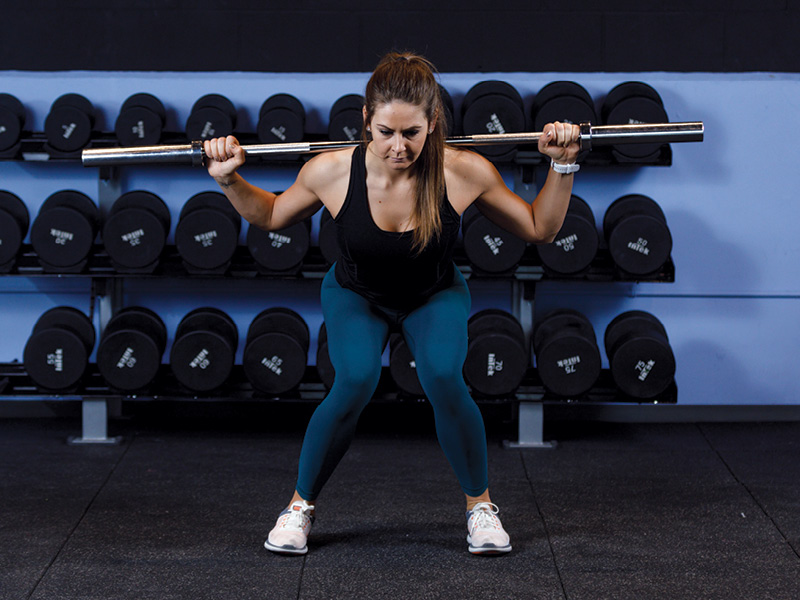
Your muscles keep your patella, or kneecap, tracking properly. Pain around the knee occurs when your kneecap tracks outside its groove with squats, lunges or jumping. Research has found muscle imbalances around the hip and knee are often the cause – namely, weak gluteal and inner quadriceps muscles.
Tip: Check how your hip and knee muscles are activating by squatting a quarter of the way down in front of a mirror, feet hip-width apart. Your knees should align directly under each hip and above each foot, and not bulge outward or fall inward.
5. Shoulder Impingement
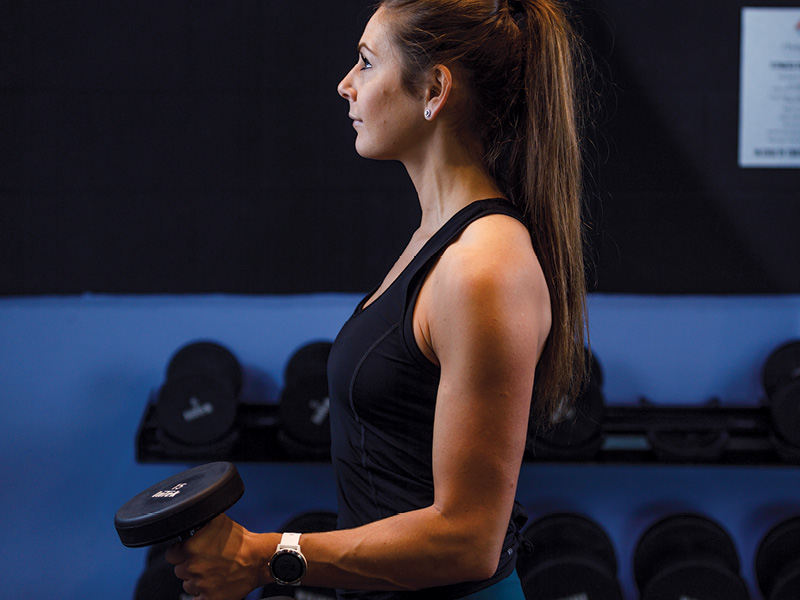
Three tendons and a bursa all lie in a tiny space at the top of your shoulder joint. Muscle imbalances leading to a poorly positioned shoulder blade are often to blame for impingement of these structures, causing jolts of pain with movements such as inclined bench press or military press. Identified early, impingements can improve quickly with control of your shoulder blade position.
Tip: Check your baseline position by standing sideways in front of a mirror with your arm at your side. Your elbow should fall slightly in front of your shoulder. If your elbow falls behind your shoulder, correct this by pulling the shoulder blade back. Maintain this position throughout your workout.
Help guard your body from injury by ramping up exercise routines gradually, using these tips while doing so, and learning to differentiate post-exercise soreness from injury-related pain. Seek the help of a healthcare professional if you’re feeling pain or discomfort and save yourself weeks of agony. Most importantly, work out wisely!




